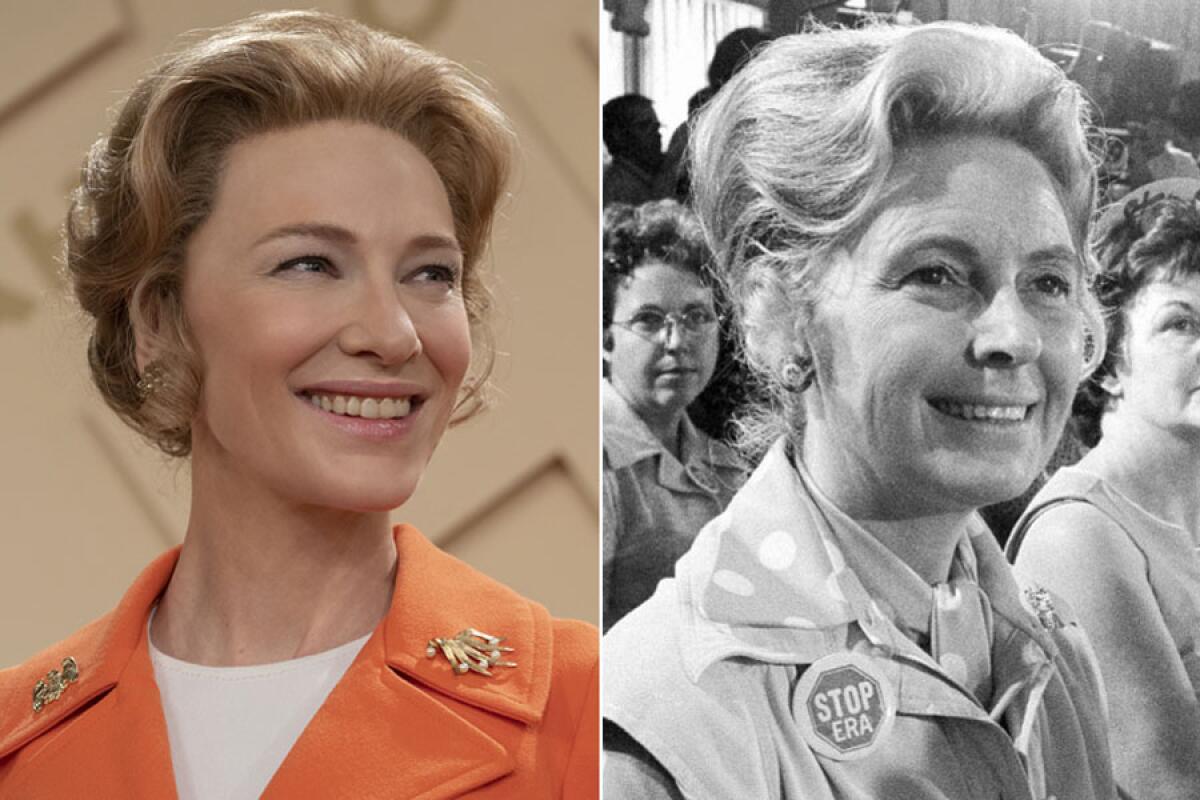Op-Ed: Now, as in the 1970s, it’s men, not women, who will defeat the Equal Rights Amendment

In February, the House voted to remove the deadline on ratification of the Equal Rights Amendment, just weeks after Virginia took a long-delayed vote and pushed the ERA over the 38-state-ratification threshold required by the Constitution. Now, if the Senate seconds the House, the 28th Amendment could become part of the supreme law of the land: “Equality of rights under the law shall not be denied or abridged by the United States or by any state on account of sex.”
The Trump administration and other opponents insist the ERA expired irrevocably when it failed by three states to meet a ratification deadline first set at 1979, seven years from passage in Congress, and then extended to 1982. In addition, five ratifying states by then had voted to rescind their support. Nonetheless, there are cogent legal arguments that say Congress has it in its power to resolve those issues and resurrect the ERA ratification process from the legislative graveyard.
Just in time for the debate on a revivified ERA, FX unveiled its miniseries “Mrs. America” about conservative icon Phyllis Schlafly and her grass-roots attack on equal rights in the 1970s. In it, Schlafly, played by Cate Blanchett (who just received an Emmy nomination for the role), pits mothers and homemakers against feminists in a campaign built on misinformation and fear. Women fighting women, we gather from “Mrs. America,” wiped out the ERA for a generation.
In reality, the amendment’s success or failure was then and is now primarily in the hands of men. Fifty years ago, the ERA’s chances were poisoned by the choices of a few powerful male leaders in Washington and in state legislatures. Now similar forces are poised to do it all over again.
In 1970, there were only 10 women in the House of Representatives and one in the Senate. For more than a decade, House Judiciary Committee Chairman Emanuel Celler had blocked the ERA from reaching the floor for a debate or a vote. Finally, Rep. Martha Griffiths (D-Mich.) used a discharge petition to wrench it out of committee. Given the chance to vote on it, the House supported the amendment — with no ratification deadline — 352 to 15, a 96% majority.
Even with Virginia’s latest ratification, the Equal Rights Amendment looks doubtful.
But when the ERA proceeded to the Senate, the maneuvers of its opponents prevailed. It was Southern conservative Sam Ervin (D-N.C.) who proposed limiting the time states would have to ratify the amendment; he also demanded the addition of a provision exempting women from the draft. Others tacked a right to school prayer onto it. With the session ending, the ERA’s enemies made full use of the Senate rule allowing unlimited debate: It died without a vote.
Griffiths began again in 1971, this time adding Ervin’s proposed seven-year ratification deadline to the amendment, in a bid to quiet critics and gain supporters. But the men who insisted on the deadline — Celler and Ervin — voted against the ERA anyway.
Nonetheless, in March 1972 both houses of Congress voted to adopt the Equal Rights Amendment in numbers that suggest it could have reached the necessary two-thirds vote even without a ratification deadline.
Schlafly began her campaign when the battle moved to state legislatures. Equal rights, her newsletter said, would end women’s “privileges.” It would eliminate alimony, require unisex bathrooms and, in an echo of Ervin’s floor speeches, send mothers to war.
Never mind that simply requiring gender neutral laws in no way foretold such consequences. Schlafly’s distortions ignored what the ERA’s female framers had shaped: A level playing field to help “wife, abandoned wife, and widow” in “supporting her family” by opening up opportunities from which she was excluded.
The ERA “would not downgrade the roles of mother and housewife,” but “give [them] new dignity,” argued Rep. Florence Dwyer (R-N.J.). Reps. Patsy Mink (D-Hawaii) and Shirley Chisholm (D-N.Y.), the first women of color to be elected to Congress, argued that the ERA wouldn’t so much force women into the draft as end it entirely. (The U.S., already moving in that direction, switched to a volunteer army in 1973.)
In a well-functioning constitutional democracy, proposed amendments deserve reasoned debate and a vote by lawmakers responsive to the will of the people. But the ERA’s opponents did all they could to prevent that in key state legislatures.
In Virginia, for example, the most senior men in the House of Delegates and in the Senate kept the ERA in committee by any means necessary. As the ratification clock was ticking, these delay tactics prevented the debate needed to inform Virginians about what the ERA would do, just as it shielded politicians from publicly siding for or against women’s rights. It allowed a few men to let the ERA die without taking full political responsibility for killing it.
This history reflects the fact that women have never had the numbers to make the Constitution change without getting men to back them up. Even today, with women in both houses of Congress at an all-time high, they represent just 23.2% of the House and 26% of the Senate. Congressmen can adopt an amendment while ignoring the will of every single female member.
Likewise, in every state except Nevada, men hold a majority of the seats in the legislature. There too men can ratify a constitutional amendment without even trying to persuade a single female colleague.
Polls show that three-fourths of Americans support the Equal Rights Amendment. If the Senate chose to follow the House and lift the ERA’s ratification deadline, the door would be opened to giving women their due in the Constitution. However, like Emanuel Celler and Sam Ervin before him, today’s ERA gatekeeper, Senate Majority Leader Mitch McConnell has said he’s “personally not a supporter.”
Instead of blaming women for the failure to ratify the ERA, we should challenge the process of constitutional change and the men who exert power over it.
Julie C. Suk, a professor of sociology and political science at the Graduate Center of the City University of New York, is the author of “We the Women: The Unstoppable Mothers of the Equal Rights Amendment.”
More to Read
A cure for the common opinion
Get thought-provoking perspectives with our weekly newsletter.
You may occasionally receive promotional content from the Los Angeles Times.











